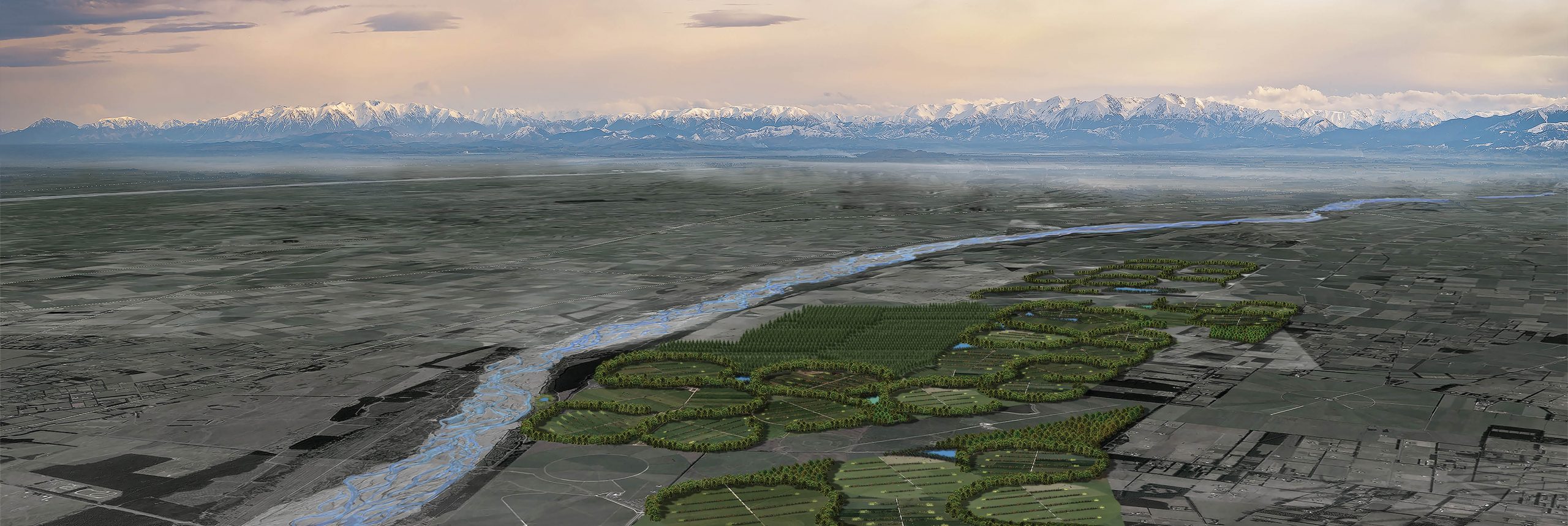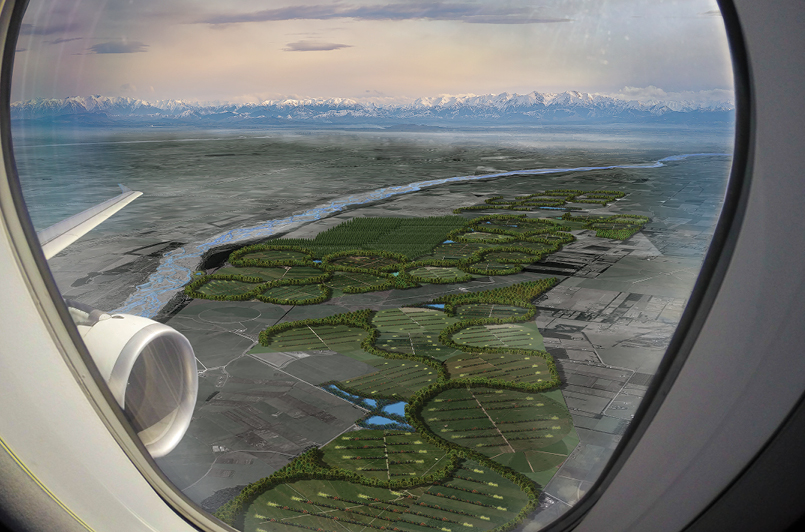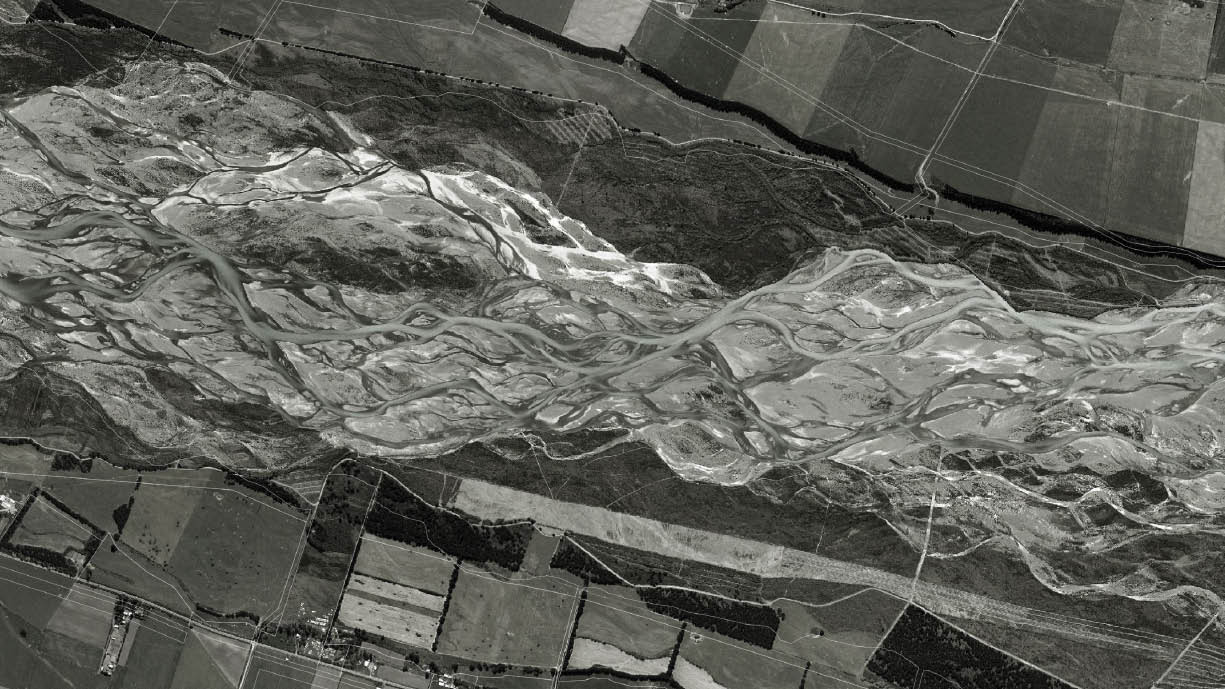
Leveraging the Opportunities Irrigation Bring
The main design element’s swirling patterns draw its inspiration from the braided river forms of the Waimakariri River from which the water for irrigation of the property is taken.
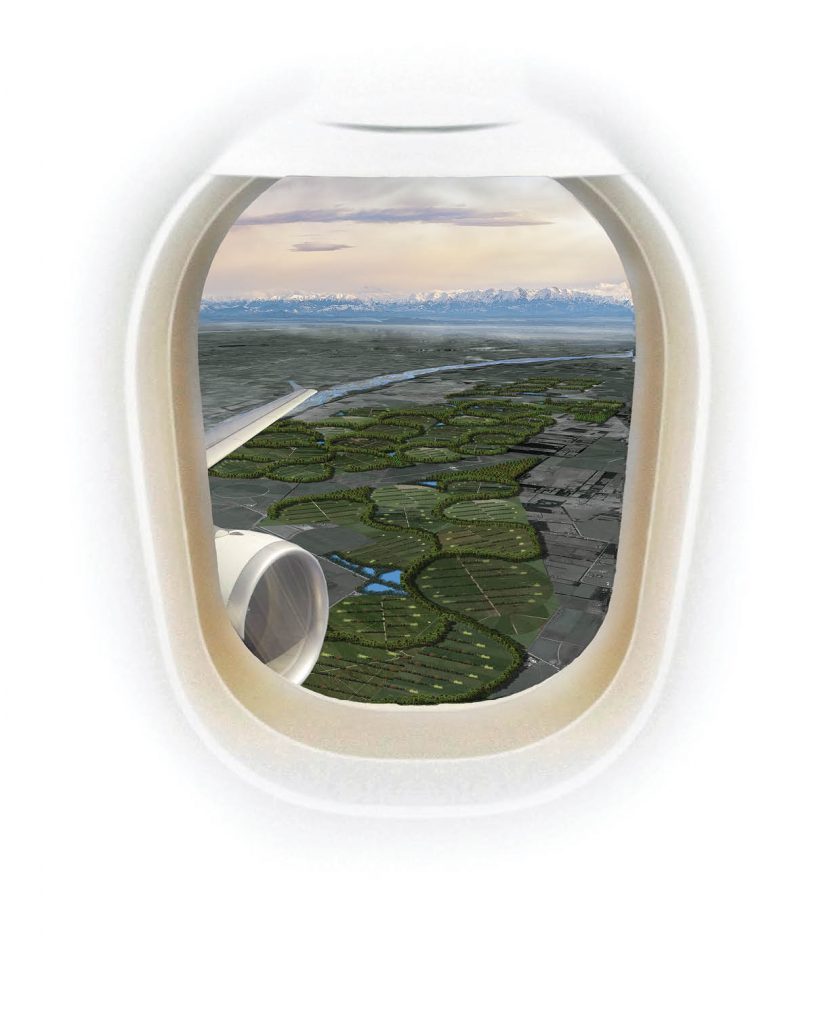
A distributed forest
Artist impression of Te Whenua Hou planting design as seen from the air. The project establishes a distributed native forest of 1.2 million native plants, trees and shrubs running across a series of 20 farms that links and strengthens both agricultural and biodiversity outcomes by the way it threads its way through the development.
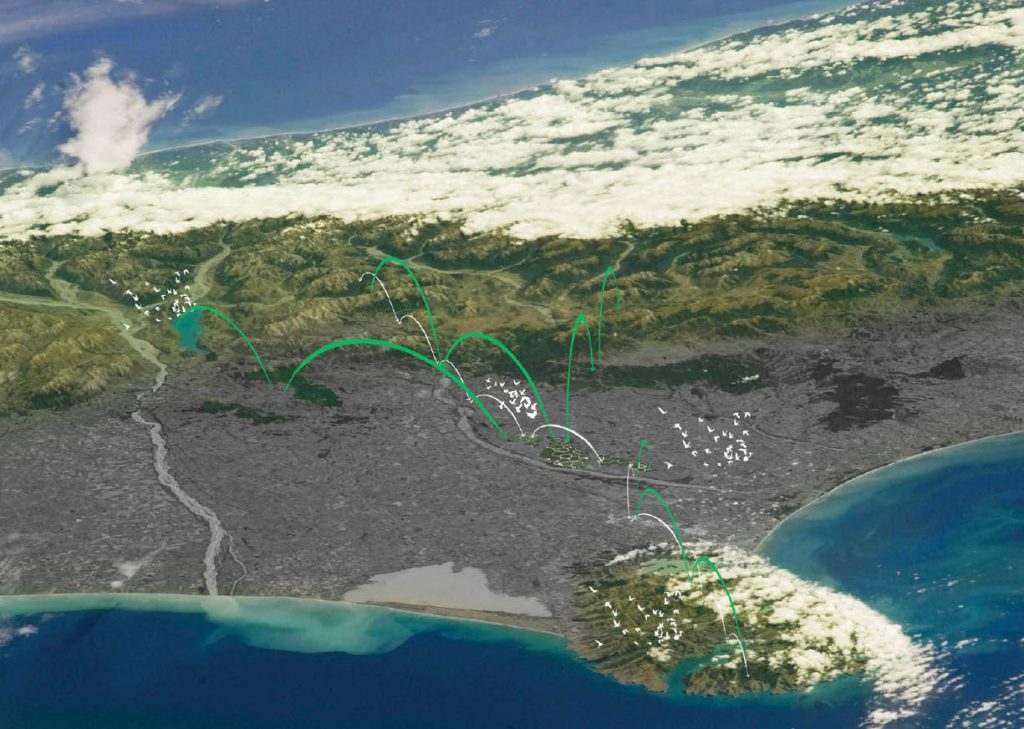
Creating a 350 hectare ecological bird bridge cross the Canterbury Plains…
The distributed forest is meant to generate benefits beyond its boundary, and due to its scale it provides the possibility for reestablishing the first native bird corridor between the foot hills of the South Island’s Southern Alps and the rapidly reforesting gullies of the coastal Banks Peninsula, with options for neighbouring properties to join in.
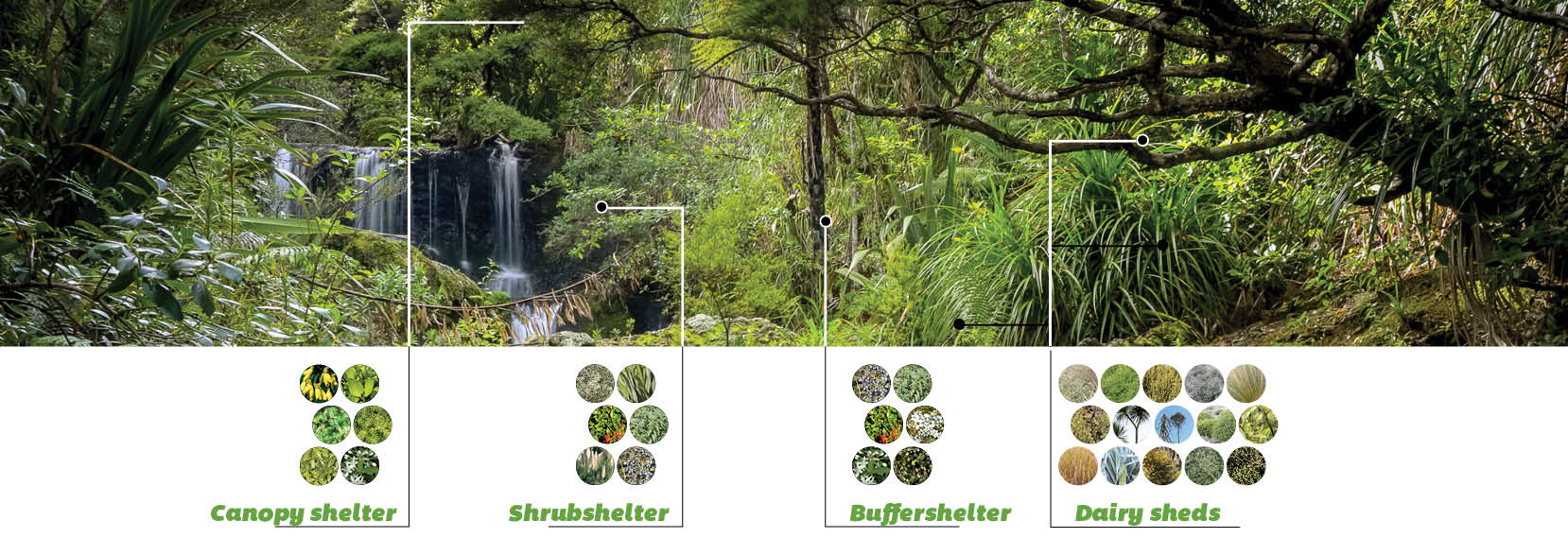
Shelterbelt and reserve network
Planting configurations are based on fractal forms that reduce complexity during the planting process, while creating variation and seasonality, and supporting options for later harvest of plant species such as totara, which is culturally highly valued.
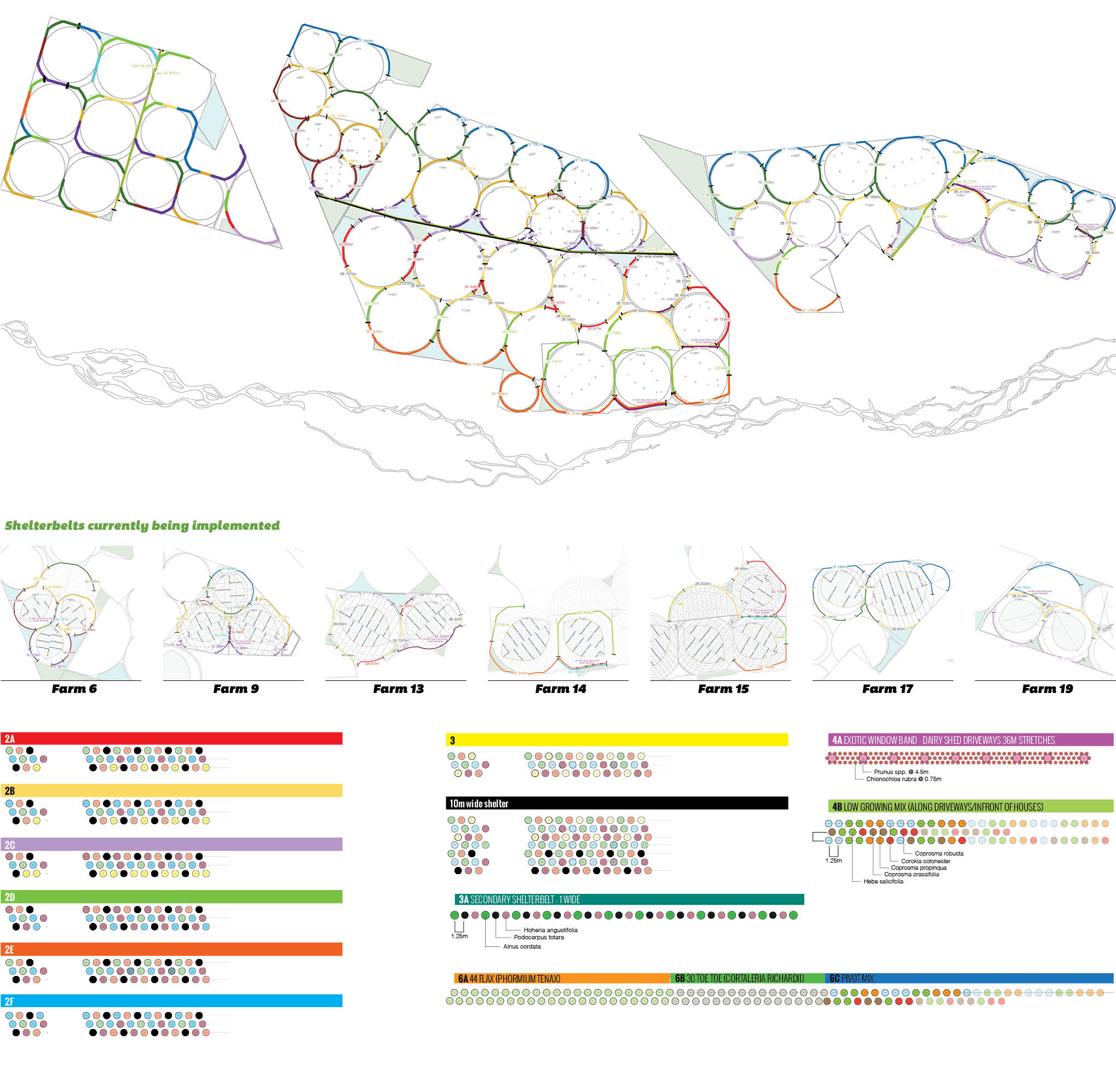
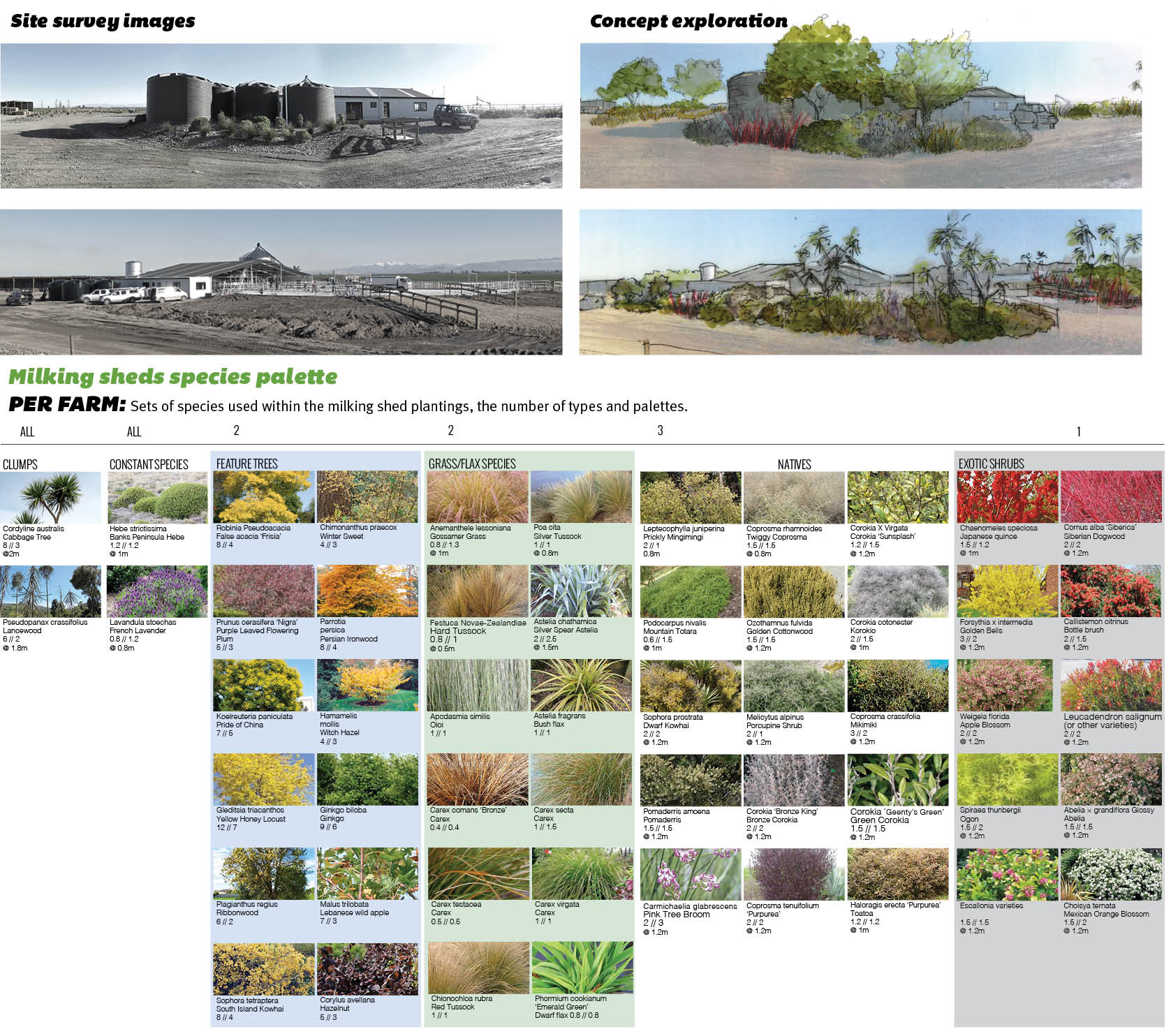
Designing at a closer scale with pattern planting at the milking sheds
Planting at the milking sheds is an opportunity to provide these places with character, shelter and amenity. Native and exotic shrub species are selected from a palette for each shed and planted according to a braided river pattern.
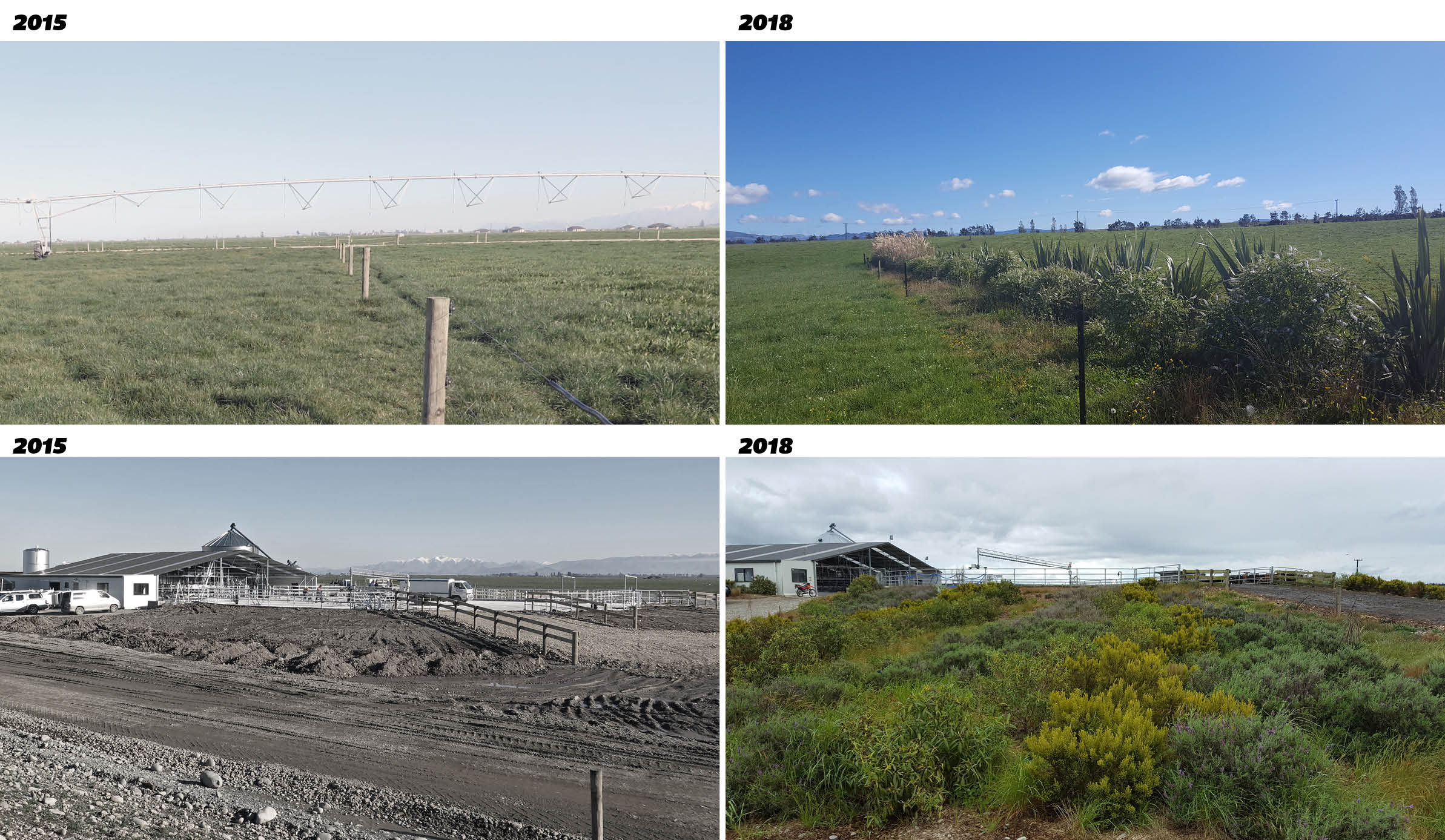
Future potentials
The distributed forest is designed to intentionally set up conditions, so that later conversion into other productive uses potentially driven by changes in demand and reduced tolerance of water pollution – can be considered.
Te-Whenua-Hou-Posters
